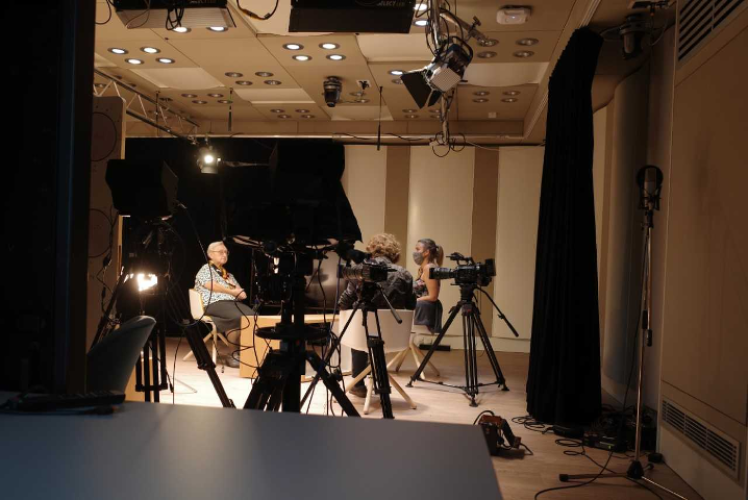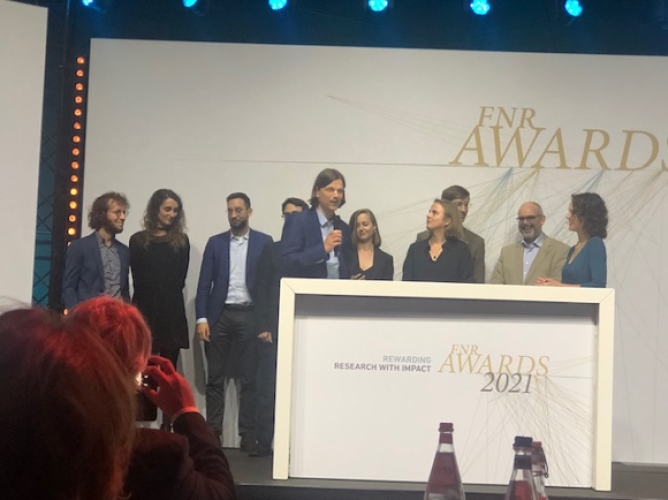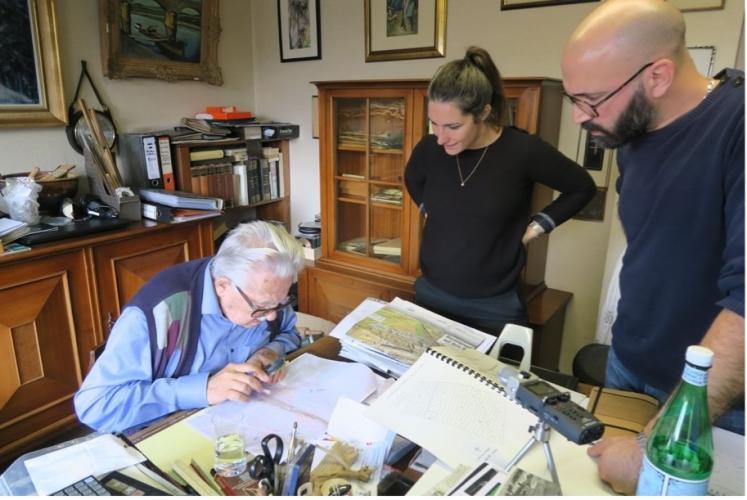2021 in review
Public history
Authors: Werner Tschacher, Joëlla van Donkersgoed, Thomas Cauvin and Stefan Krebs, head of the research area "Public history"
In 2021, two research teams in public history at the C²DH focused on the recent history of the Minett region. The projects, "Remixing Industrial Pasts in the Digital age" and "Public History as the New Citizen Science of the Past" set new thematic and methodological priorities in the study and communication of regional history. Diverse topics of everyday history and unknown life-stories of people became the focus of interest. Creative ways had to be found to bring the public into contact with these historical topics of the region. Both digital and traditional means were chosen as platforms to engage with the residents of the Minett region.
"Remixing Industrial Pasts in the Digital age"
In the first half of the year, source gathering continued on the selected topics related to the history of Minett in the Industrial Age (1850-1970). Numerous oral interviews were conducted with contemporary witnesses and crowdsourcing of private documents and photo-collections continued.

With the beginning of the second half of the year, the initial focus was on the realization of the three public history projects, which has been or will be made accessible to the general public from February 2022 as part of the European Capital of Culture Esch2022.
The first of these projects is a multimedia exhibition "Remixing Industrial Pasts: Constructing the Identity of the Minett" is an audiovisual presentation in the Massenoire industrial hall in Belval. Through numerous video projections and audio feeds, visitors are presented with an atmospheric animation of fragments and narratives around three main themes: Industry, People and Landscapes.
The second project is the virtual exhibition "Minett stories". The Remix was concerned with the conception and elaboration of different types of digital storytelling. The team wrote storyboards for around 20 exhibition chapters on the main themes of the project: interactive video documentaries, graphic novels, interactive maps, radio plays, interactive podcasts and traditional texts, combined with historical documents, video and audio recordings. In the preparation of the historical material the team again used its creative potential in cooperation with designers, artists, filmmakers and regional contacts.
Thirdly, we were able to complete most of the preparatory work for the historical mobile game “The Minett Stories Rallye” before the end of 2021. The interactive game is intended to introduce the residents of the region and visitors to the European Capital of Culture to interesting places and their history in Belval in a playful way and in the style of a treasure hunt. It appeals especially to younger people and people who like to use the smartphone for digital games.

On October 21, 2021, Stefan Krebs and the Remix team were awarded the Outstanding Promotion of Science to the Public Prize by the Luxembourg National Research Fund for the interactive video installation "Historical Voices from the Minett" which was shown to citizens of Esch in autumn 2020 at the Temporary History Laboratory (FNR).
Public History as the New Citizen Science of the Past (PHACS)
The year 2021 has been the commencement of the activities for the ATTRACT FNR-grant project called Public History as the New Citizen Science of the Past (PHACS). The aim of this project is to develop public history and participatory models for interpreting the past. Led by Thomas Cauvin, the team proposes, develops, constructs, and evaluates innovative participatory frameworks to engage and empower groups, associations, and users in critical debates on the contemporary history of Luxembourg and Europe.
The first initiative to reach and engage the residents of Esch was the creation of a Facebook-group called “Fl’ESCH Back”. This social media platform is not only used to disseminate about the historical research by the C2DH, but it explicitly aims to interact with people and to crowdsource memories about historical and cultural events. The Facebook group has rapidly grown to an active online community where old photographs are shared, questions about the past are raised, and anecdotes are exchanged.
To develop public history participatory urban projects in the city Esch-sur-Alzette, Thomas Cauvin has created a fruitful partnership with the local cultural organization Nuit de la Culture. Together with post-doctoral researcher Joëlla van Donkersgoed, a series of public history activities have been initialized under the projectname “HistorEsch: Är Stad Är Geschicht”.
The HistorEsch project aims to engage the residents actively through crowdsourcing and community events in the narration and presentation of the history of the city. During the fall of 2021, we have organized a series of community mapping events together with the REMIX PLACE team of the university’s geography department. This playful exercise allowed us to collect valuable data on how residents experience major transformations in an area. The audio recording and sensitive map contribute to the production of an inclusive audio tour on the history of the city (HistorEsch) along with an exhibition and documentary theater play (REMIX PLACE).

Besides these group activities, the PHACS team engages with the residents through targeted interviews to collect memories about places and objects. These testimonies will form the basis of an inclusive audio tour that will be accessible through a toll-free number, as well as an free exhibition that will open in September 2022.
The audiotour is modeled after an international initiative called “HearHere” by Ariel Beaujot at the University of Wisconsin. HearHere is an oral history project in downtown La Crosse (Wisconsin) and London (Ontario) where residents share their memories about the spaces they walk through every day. The stories are accessed through a toll-free number. The HistorEsch tour will use the branding of this international initiative to develop a multilingual implementation in Esch-sur-Alzette.
In 2021, Camilla Portesani and George Lawson started their PhD research projects to work on public history, shared authority and participation in museums through partnerships with the House of European History in Brussels, the M9 museum in Venice, and the Lëtzebuerg City Museum. For each museum, they will be involved in creating ways to implement public history participatory practices and assess their efficacy.
To learn from best practices and theoretical implications of public history, PHACS organized a symposium with the theme “Participation and Public Interpretations: How to Navigate Multiple Historical Narratives in Museums?”. The symposium brought together scholars, museum and archives professionals, heritage and other public history practitioners to discuss if and how multiple and sometimes conflicting historical narratives can coexist in museums.
Conclusion
Despite the challenges of a lingering pandemic situation, the public history research teams REMIX and PHACS have been able to initialize various activities to engage the public in the history of the Minett region and beyond. The activities conducted in the year 2021 have continued to progress in the new calendar year, and we would like to end this overview with a sneak peak on the ongoing activities.
In the virtual realm, the REMIX team is developing various means to engage with the wider public. They have launched an interactive mobile-web game called “The Minett Stories Rallye” which leads visitors around some interesting sites around the Belval campus. Moreover, they are working on an extensive virtual exhibition that builds upon the research that has been conducted in 2021.
The PHACS team remains active on the Fl’ESCH Back Facebook group, which by now has attracted over 1.2k followers. Moreover, the website historesch.lu was launched to support the HistorEsch project. With the website, the HistorEsch team crowdsources photos of objects and stories about places. It also is used as a platform to inform visitors about the aims of the projects, promote events, and to show the collection of testimonies and objects thus far.

